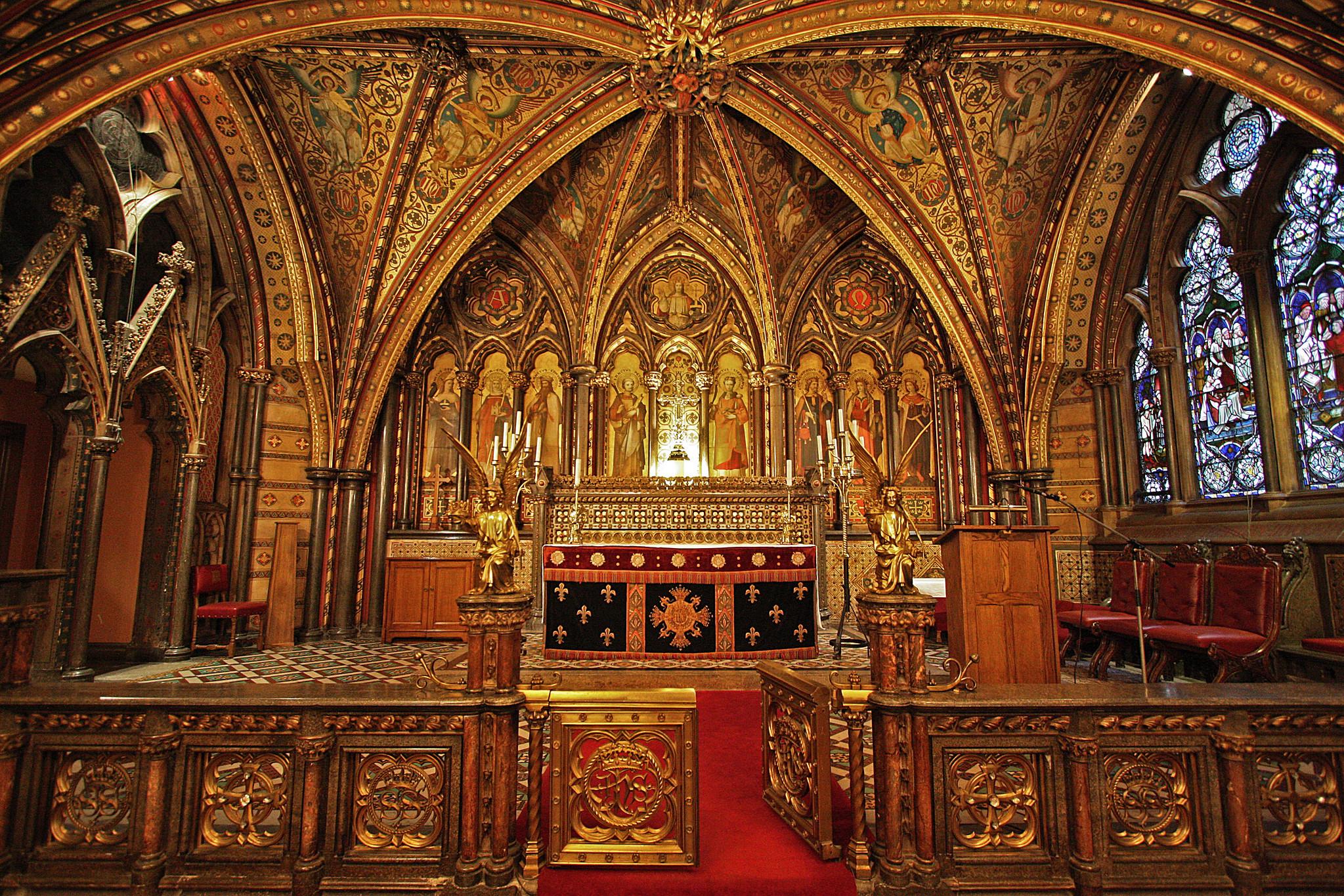St Michael Cornhill
City of London, Greater London
The church lies over the remains of the Basilica, the northern most part of the great Roman Forum built in the first century AD.

The Chapel of St Mary Undercroft was completed by King Edward I in 1297, further developed under Edward II, and finally completed by Edward III in around 1365.
Westminster, Greater London
The chapel contained five vaulted bays and clustered columns of polished purbeck marble. Its ceiling was decorated with fanciful carvings of foliage, dragons, musical angels and the heads of men and beasts, and its floor was paved with tiles mixed with marble.
By the time of the fire of 1834, the chapel had been used as a wine cellar and (so legend has it) as stabling for Oliver Cromwell's horses.
Part of the chapel had also been turned into a dining room for the Speaker of the Commons, and holes were bored into the wall to accommodate the kitchen chimneys.
Because of its underground location, the crypt chapel was one of the few structures in the Palace of Westminster to survive the great fire of 1834, although much of its stonework was harmed. The chapel was heavily restored between 1860 and 1870 by Charles Barry's (the architect of the current Palace of Westminster) son, Edward, who tried to reproduce the earlier medieval decoration and vaulting in a neo Gothic style.
During the restoration works, the remains of William Lyndwoode, the Bishop of St David's (who died in 1464) were found embalmed in the chapel's north wall; he was reburied in the cloister of Westminster Abbey. The decision to reinstate the building as a chapel was much debated, but it was slowly brought into use as one. The chapel is a Royal Peculiar, which means it does not come under the jurisdiction of a bishop but is under the monarch's control. The monarch exercises this via the Lord Great Chamberlain.
On census night, 2 April 1911, suffragette Emily Davison hid overnight in a cupboard in the chapel in order to be entered on the census form for the building as a way of ensuring her address on the night of the census was recorded as the House of Commons in claiming political equality with men. A commemorative plaque, unveiled by Tony Benn in 1999, is fixed to the cupboard.
Black Rod, who is also the Secretary to the Lord Great Chamberlain, has responsibility for managing the use of the chapel chiefly by Members of both Houses and their families for weddings and christenings.
City of London, Greater London
The church lies over the remains of the Basilica, the northern most part of the great Roman Forum built in the first century AD.
City of London, Greater London
The Dutch Church is a reformed church on the site of the 13th century Augustinian friary, the original building granted to Protestant refugees for their church services in 1550 was destroyed during the London Blitz.
Marshfield, Gwent
Mae Eglwys St Mair, Maerun, yn eglwys brydferth sy’n dyddio nôl i’r ddeuddegfed ganrif. Yn nythu’n glud yn y llain las rhwng Caerdydd a Chasnewydd, mae bellach yn adnabyddus am fod yn lleoliad ar gyfer un o episodau Dr Who!